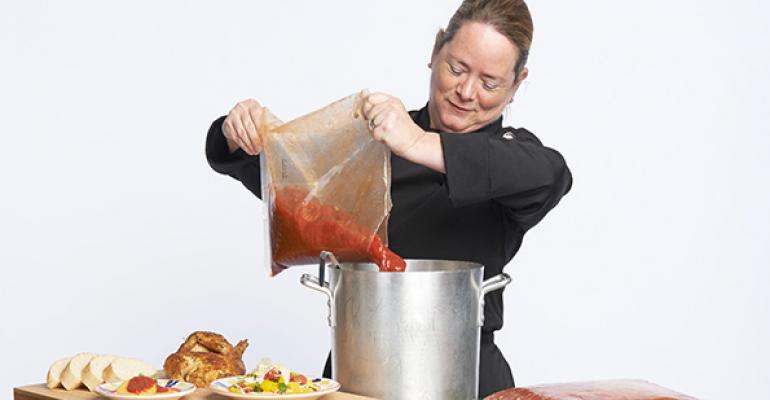Not long ago, fresh foods were a relative novelty in restaurants, found on the menus of a few forward-thinking, mainly high-end establishments.
Today, freshness is a widespread customer expectation and a rallying cry that signifies greater quality, flavor and healthfulness throughout the foodservice industry.
Serving foods at the peak of freshness is a prerequisite for operators who compete in farm-to-table, Southeast Asian, Latin-American and other fashionable cuisines. Even quick-service and fast-casual operators are delving into freshness, touting made-to-order sandwiches topped with avocados and other fresh produce, and smoothies blended with exotic tropical fruits as regular menu items and limited-time offerings.
Research shows how meaningful and pervasive the trend is. When Technomic asked consumers to choose from a list of descriptors they looked for when purchasing food or beverages at restaurants and retail stores, a large majority — 58 percent in restaurants, 80 percent in retail — chose “fresh” to a far greater extent than they did terms such as “housemade,” “scratch,” “seasonal” and “artisan.”
Overall, 83 percent of restaurants mention the term "fresh" on menus, including 73 percent of quick-service restaurants and 88 percent of full-service restaurants, according to Datassential research. In fact, 63 percent of all restaurants offering pizza use the term "fresh," followed by restaurants with deli salad appetizers, 43 percent; entrée salads, 38 percent; pastas, 38 percent; center-of-the-plate fish, 35 percent; cold sandwiches, 35 percent; and Mexican entrées, 34 percent.
“Freshness casts a halo effect on any foodservice operation,” says Lucian Gray, director, North America Foodservice Business Development for Sealed Air Corp.’s Food Care division, of which Cryovac brand food packaging is a part. “Operators are eager to provide freshness because it resonates so much with their customers.”
“The most bankable word in foodservice today is the word ‘fresh,’”
says Aaron Allen, a global restaurant consultant based in Orlando, Fla. “It is associated with healthful and better-for-you food and consumers are really starting to gravitate towards that.”
However, Allen says that even though patrons are seeking freshness — and the fast-casual chain Chipotle Mexican Grill has proven that fresh, local food can be part of a very successful business model — it is nevertheless challenging for most chains to consistently provide fresh food to their patrons, particularly quick-service operations that have customarily relied on processed food.
“A big part of the reason is because this means retooling the restaurant’s supply chain,” Allen says. “Increasingly, they are asking this: 'How can we retool the way that we source, hold and prepare fresh foods?'”
Packaging innovations, such as flexible pouches made with barrier and oxygen-scavenging films, may help operators answer those questions. They enable restaurants to expand their menus with new items, run limited-time offerings more profitably and incorporate seasonal, perishable food items into menus year-round.
Take avocados, known for a short shelf life and low yield when used from scratch in sandwiches, salads and guacamole. Cryovac Freshness Plus flexible packaging is an active packaging material that removes oxygen from the package to protect avocados and other delicate food products, such as proteins, fresh pasta, tomatoes and fruit purees, from its harmful effects.
Thus a batch of guacamole made from fresh avocado pulp packaged in a Freshness Plus pouch keeps its flavor and color significantly longer than a batch made from scratch and saves much labor in the process. Greater yield, less spoilage and lower labor add up to higher profits.
Similarly, being able to capture fresh spring asparagus or summer berries in active barrier film pouches that protect them from oxygen and extend their shelf life can make the difference between a profitable LTO and a disappointing one. As a result, operators can integrate these products into their menus without elevating back-of-house costs or work.
While the transition to flexible packaging in an industry long familiar with cans can seem daunting, close consultation can help restaurants deliver freshness benefits to customers faster. Sealed Air’s team of culinarians, food scientists and packaging experts can help operators implement flexible packaging by functioning as an intermediary with their food processors or distributors, Gray says.
All of this underscores the fact that freshness is a powerful and growing force in the marketplace. Operators who leverage packaging innovations to provide the fresh, flavorful and healthful meals that are in demand today are grasping a historic opportunity that will pay dividends in customer satisfaction and bottom-line success.





